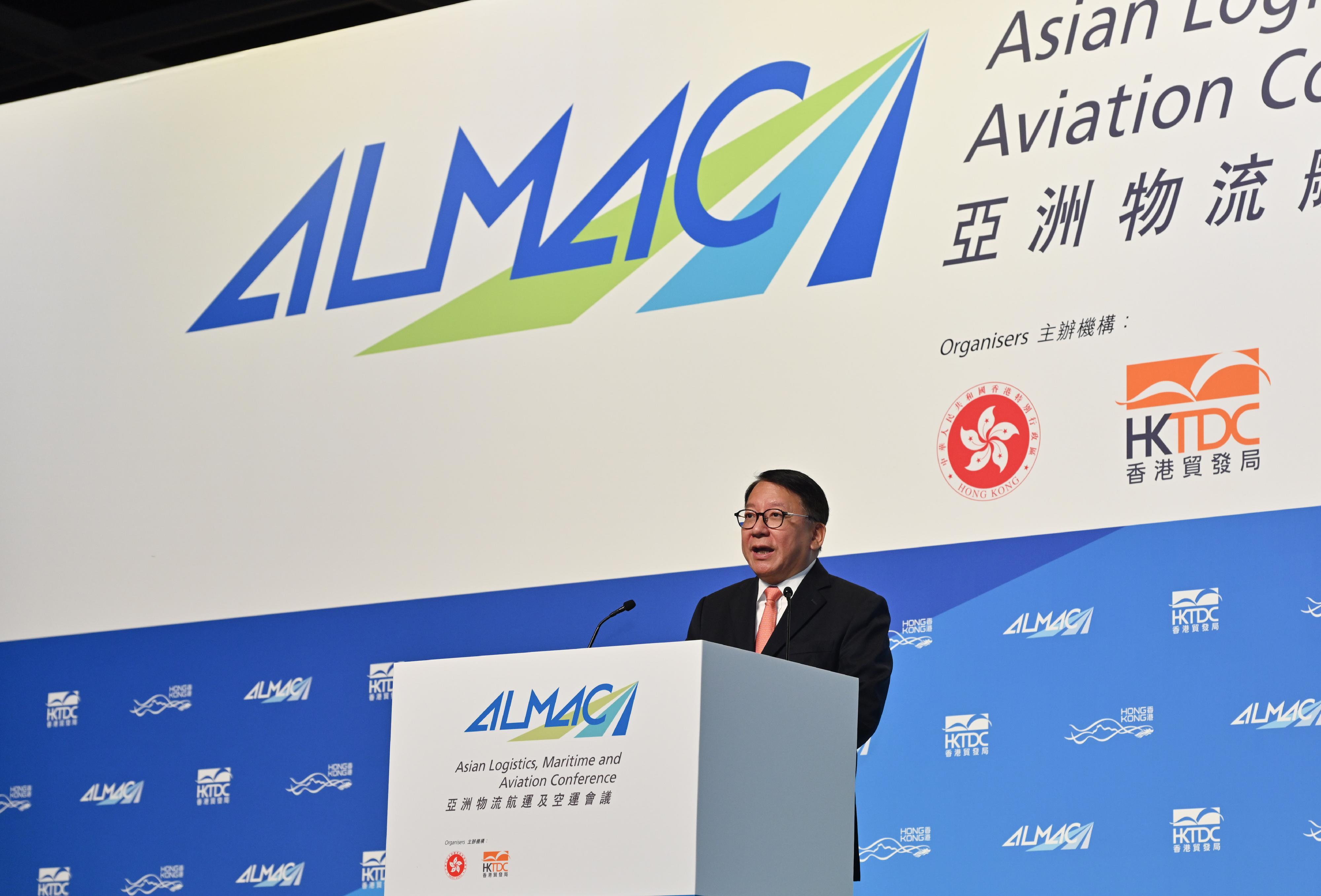Following is the speech by the Acting Chief Executive, Mr Chan Kwok-ki, at the Asian Logistics, Maritime and Aviation Conference 2024 today (November 18):
Vice Minister Fu Xuyin (Vice Minister of Transport), Dr Peter Lam (Chairman of the Hong Kong Trade Development Council), distinguished guests from around the world, ladies and gentlemen,
Good afternoon. I am pleased to welcome you to the 14th Asian Logistics, Maritime and Aviation Conference – the largest supply-chain management conference in Asia. And I am delighted to note that this year's two-day global gathering is expected to attract some 2 000 professionals from more than 30 countries and regions.
Hong Kong has long been a key player in the global logistics chain. And we are determined to build on our logistics heritage.
Thanks to the National 14th Five-Year Plan, Hong Kong has the country's full support to develop as an international shipping and aviation centre – and, no less important, to boost our global standing as a financial and trade hub.
Hong Kong's aviation strength is built on our world-class infrastructure, extensive air network and excellent connectivity within the Greater Bay Area. Indeed, Hong Kong International Airport is connected to nearly 200 destinations worldwide and has topped the world for air cargo throughput in nine of the past 10 years. It helps, too, that about half the world's population is within five hours' flight time of Hong Kong.
This year, I am delighted to say, Hong Kong International Airport enters the era of the Three-runway System, which is set for commissioning in about 10 days. It will be a game changer. By 2035, the airport will be able to handle up to 120 million passengers and 10 million tonnes of cargo a year.
More good news. Internationally recognised logistics companies are turning to Hong Kong International Airport for their future. United Parcel Service will develop a new hub facility at the airport. That follows last year's launch of DHL's expanded Central Asia Hub and the Cainiao Smart Gateway.
These and other developments will also enhance our cargo connectivity with the Greater Bay Area, boosting our status as an air cargo transshipment centre.
And we will continue to expand our air network, strengthening co-operation with civil aviation partners and supporting airlines to elevate their services on major routes and to explore new destinations, particularly in Belt and Road countries.
This week, of course, is Maritime Week. And we have plenty to celebrate, thanks to Hong Kong Port and our superb connectivity with ports around the world.
The Hong Kong Shipping Registry, let me add, is the fourth largest in the world in gross tonnage.
Hong Kong boasts a dynamic maritime services cluster, counting more than 1 100 companies and providing solid support for the industry. And we are committed to expanding our high-end maritime service offerings, as last month's Policy Address underlined.
Hong Kong ranked fourth in this year's International Shipping Centre Development Index, a testament to our strengths as an international maritime centre.
And we see long-term opportunities in Hong Kong's rise as a green and smart port. Our Action Plan on Maritime and Port Development Strategy outlines that promising future, including building green fuel-bunkering capabilities. Just three days ago, we published an action plan on developing Hong Kong into a green maritime fuel-bunkering centre.
A port community system will be up and running next year, enabling the flow and sharing of data within the industry.
Combining our aviation and maritime strengths, Hong Kong has long been a major cargo gateway to and from the Greater Bay Area.
And the Government is committed to sustaining Hong Kong's standing as a regional logistics hub. The Action Plan on Modern Logistics Development published in October 2023 will guide our way, helping the industry capitalise on the far-reaching opportunities made possible by e-commerce and smart and green logistics.
The Government will encourage transshipment, extending arrangements under the Air Transhipment Cargo Exemption Scheme to other cargo-transshipment options. That will enlarge our cargo catchment area, increasing cargo throughput and boosting our competitiveness as a transshipment hub.
We will also step up efforts to develop Hong Kong into a cross-boundary, e-commerce logistics and distribution centre.
Ladies and gentlemen, this year's Asian Logistics, Maritime and Aviation Conference is all about creating a resilient and sustainable future for global supply chains. And Hong Kong is determined to play a vital part in that promising future.
My thanks to the Hong Kong Trade Development Council for organising this year's conference with us. I am grateful, too, for the support of our partners and sponsors in making this year's conference a resounding success.
I wish you all a rewarding and enjoyable stay here in Hong Kong, and the best in business and logistics in the coming year.
Thank you.
